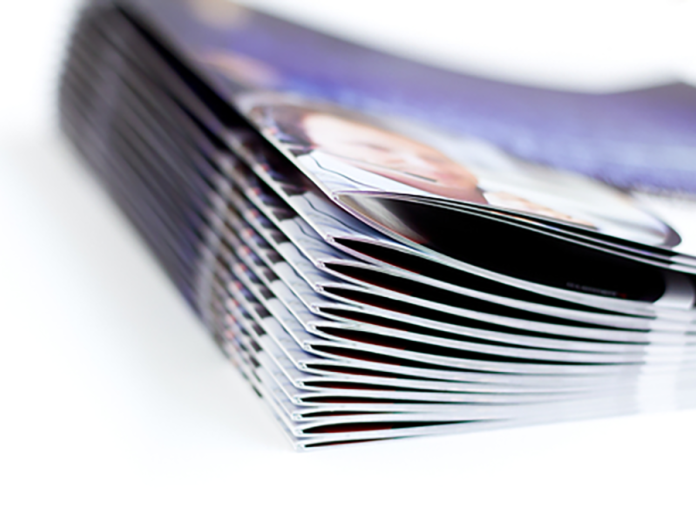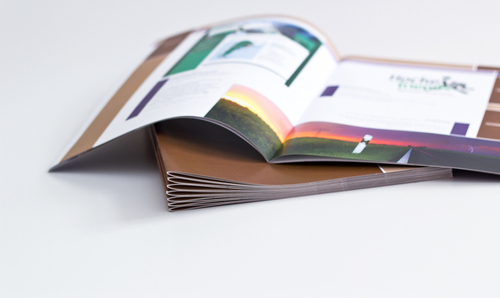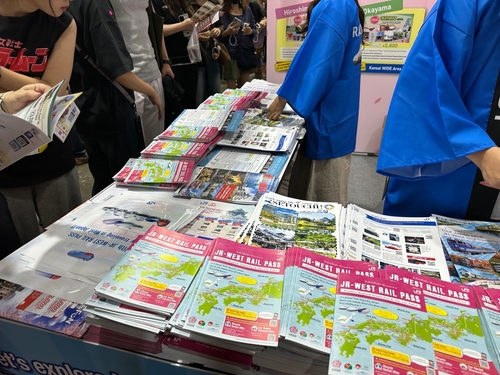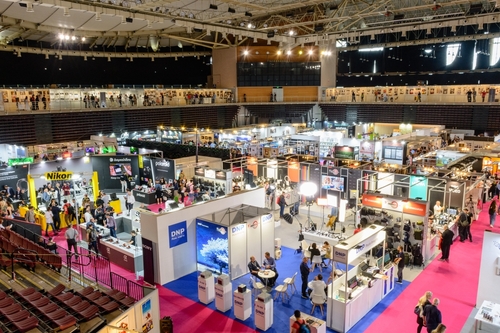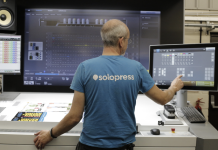In the realm of conferences and exhibitions, effective communication is key to ensuring a seamless experience for attendees. Show Guides (saddle stitched, or stapled, brochures) serve as indispensable tools in this context, offering a compact and organised way to present essential information to your audience. These brochures are not only practical but also deliver a polished representation of your event, guiding attendees through schedules, speakers, and exhibitor details with ease. As we delve into the power and potential of Show Guides, we’ll explore how they can elevate your event by providing clarity, accessibility, and a touch of professionalism. Whether you’re a seasoned event organiser or just starting out, understanding the role of these guides can make a significant difference in mastering your event.
Understanding Show Guides
Importance of Event Materials
Event materials, such as Show Guides (saddle stitched brochures and booklets), play a crucial role in the success of any conference or exhibition. These materials serve as the backbone of event communication, ensuring attendees have quick access to vital information. A well-constructed Show Guide can enhance the overall attendee experience by providing clear navigation through the event. It outlines schedules, speaker profiles, and exhibitor lists, allowing participants to plan their day efficiently. Furthermore, these guides act as a tangible representation of the event’s brand, offering a professional touch that can leave a lasting impression. In the digital age, printed materials like Show Guides still hold significant value, as they are less prone to technical glitches and can be easily referenced. By investing in quality event materials, organisers can ensure attendees feel informed and engaged throughout the event.
What are Saddle Stitched Brochures?
Saddle stitched brochures, commonly called stapled brochures, are a popular choice for creating Show Guides due to their simplicity and effectiveness. These brochures are constructed by folding sheets of paper and fastening them together with staples along the spine, which resembles a saddle—hence the name. This method booklet printing is cost-effective and suitable for brochures with a lower page count, typically up to 64 pages, making it ideal for event programmes. Saddle stitching allows for easy flipping, ensuring attendees can quickly find relevant information. The brochures can be printed in various sizes, though A4 and A5 are the most common, providing a balance between portability and readability. The durability and professional appearance of saddle stitched brochures make them an excellent choice for Show Guides. They offer ample space for detailed content while remaining compact enough to be conveniently carried around by attendees. Overall, these brochures are a practical solution for delivering essential event information.
Benefits of Using Show Guides
Show Guides (saddle stitched brochures) offer numerous benefits that can significantly enhance the experience for both organisers and attendees at events. Firstly, they provide a structured way to present important details, such as schedules, speaker information, and exhibitor lists, ensuring that attendees are well-informed and can navigate the event with ease. This organised approach reduces confusion and allows participants to make the most of their time at the event. Secondly, Show Guides serve as a tangible keepsake, enabling attendees to refer back to the event long after it has concluded, which can help reinforce brand recognition and loyalty. Additionally, having a physical guide reduces reliance on digital devices, which can be beneficial in low-signal areas or for attendees who prefer traditional media. Lastly, a professionally designed Show Guide reflects the quality of the event, leaving a positive impression on attendees and potentially attracting more participants in future editions.
Designing Effective Show Guides
Key Elements to Include
To design an effective Show Guide, several key elements should be incorporated to ensure it serves its purpose efficiently. Firstly, a clear and concise event schedule is crucial. It should highlight the timings of key sessions, breaks, and networking opportunities. Secondly, include detailed profiles of speakers, providing attendees with insight into their background and expertise, which can enhance engagement. Exhibitor information is also vital; a comprehensive directory with booth numbers helps attendees locate and interact with exhibitors of interest. Maps of the venue are another essential feature, aiding navigation and reducing the likelihood of attendees missing important sessions. Additionally, consider including a section for notes, allowing attendees to jot down key takeaways. Lastly, ensure artwork in the guide reflects the event’s branding with consistent use of logos, colours, and fonts. This not only reinforces the event’s identity but also contributes to a professional and cohesive presentation.
Crafting Engaging Content
Crafting engaging content for Show Guides is essential to capture and maintain attendee interest. Start by using clear and concise language, ensuring that information is easily digestible. Avoid jargon and overly complex terms that may alienate readers. Break content into sections with headings and subheadings to guide the reader naturally through the material. Incorporate visual elements such as images, infographics, and icons to enhance readability and break up text-heavy sections. These visuals not only make the guide more appealing but also help convey information quickly. Include quotes or highlights from keynote speakers to add depth and insight, sparking interest and anticipation among attendees. Additionally, a section dedicated to FAQs can address common attendee queries, enhancing their experience. Finally, consider the tone of your content; it should align with the event’s theme and audience. Engaging content is not only informative but also connects with the reader on a personal level, encouraging further exploration.
Visual Appeal and Layout
The visual appeal and layout of Show Guides are pivotal in ensuring they are not only functional but also attractive to attendees. Start by selecting a clean, easy-to-read font and maintain consistency in font sizes across headings and body text for a professional look. The use of colour should complement the event’s branding; however, be mindful of not overwhelming the reader with too many colours. Balance is key. High-quality images and graphics should be used where possible, as they can effectively convey messages and add visual interest. White space is another important element; it prevents inner pages of the guide from appearing cluttered and helps direct the reader’s focus to important information. The layout should facilitate easy navigation, with a logical flow from one section to the next. Consider using grid systems to align content neatly. A well-designed Show Guide not only informs but also enhances the overall experience, reflecting the quality of the event.
Distribution and Accessibility
Strategies for Effective Distribution
Effective distribution strategies are crucial for ensuring that Show Guides reach every attendee promptly. Start by providing guides at multiple touchpoints, such as registration desks, information booths, and entrances to the event venue. This ensures accessibility from the moment attendees arrive. Consider using event staff or volunteers to distribute guides directly to attendees, offering a personal touch and the opportunity to answer any immediate questions. For larger events, it might be practical to mail the guides to attendees in advance, allowing them to familiarise themselves with the content before arrival. Digital versions can also complement physical copies; providing a downloadable PDF on the event’s website or app can cater to tech-savvy participants. Additionally, ensure that guides are available in various formats for those with accessibility needs, such promotional materials such as large print or audio versions. A well-planned distribution strategy maximises reach and ensures all attendees have the information they need to fully engage with the event.
Ensuring Accessibility for All Attendees
Ensuring that Show Guides are accessible to all attendees is crucial for fostering an inclusive event environment. Begin by considering diverse needs during the design phase. For attendees with visual impairments, offer large print versions or consider braille editions if feasible. Providing digital versions, compatible with screen readers, can further enhance accessibility for those with varying needs. Additionally, audio versions may be beneficial for individuals who prefer listening over reading. It’s also important to ensure that physical distribution points are accessible to individuals with mobility challenges, with guides placed at an appropriate height for wheelchair users. Training staff to assist attendees with disabilities in locating and using guides can further improve the experience. Lastly, seek feedback from past attendees with disabilities to identify potential improvements in accessibility. By prioritising these considerations, event organisers can ensure that all participants, regardless of ability, have equitable access to the information they need for a successful event experience.
Maximising Reach and Engagement
To maximise the reach and engagement of Show Guides, it’s essential to implement a multi-channel distribution strategy. Beyond physical copies, leverage digital platforms to extend accessibility. Upload the guide to the event website and encourage attendees to download it in advance. Utilise social media channels to promote the guide’s availability, highlighting its value in navigating the event. Incorporating interactive elements, such as QR codes linked to exclusive content or updates, can further engage attendees. Consider integrating the guide into an event app, where users can personalise their schedules and receive real-time notifications. Encouraging feedback through surveys or direct communication within the guide can also enhance engagement by making attendees feel heard and valued. By offering multiple formats and interactive elements, trade shows’ organisers can ensure that the Show Guide becomes a central tool in the event experience, reaching a broader audience while actively involving them in the event activities.
Measuring Success of Show Guides
Gathering Attendee Feedback
Gathering feedback from attendees is crucial for measuring the success of Show Guides and identifying areas for improvement. Post-event surveys are an effective tool for collecting detailed insights. Include specific questions about the guide’s usefulness, design, and content clarity. Open-ended questions can yield qualitative data, offering attendees the chance to express their thoughts freely. Additionally, consider using digital platforms, such as event apps or email campaigns, to solicit feedback, making it convenient for attendees to respond. During the event, observe how attendees interact with the guides and gather informal feedback through conversations with participants. This real-time feedback can provide immediate insights into any issues or particularly well-received aspects of the guide. Collating and analysing this data allows organisers to refine future guides, ensuring they meet attendee needs more effectively. By prioritising attendee feedback, event organisers can continuously enhance the quality and impact of their Show Guides, ultimately contributing to a more successful event.
Analysing Distribution Metrics
Analysing distribution metrics is essential for assessing the effectiveness of Show Guides. Start by tracking the number of guides distributed at various points, such as registration desks and entrances. Compare these figures to overall attendance numbers to gauge coverage. For digital versions, monitor download statistics and engagement rates using website analytics tools. This data shows how many attendees accessed the guide online and can indicate the popularity of digital versus physical formats. Additionally, analyse the timing of distribution; understanding peak times can help optimise future strategies. Consider the return rate of unused guides too, as a high surplus might suggest overproduction or distribution inefficiencies. Feedback on distribution methods, gathered through surveys or informal conversations, can provide further insights into attendee preferences. By examining these metrics, organisers can refine their marketing materials distribution approach, ensuring that Show Guides are efficiently and effectively reaching their audience, ultimately enhancing the overall attendee experience.
Continuous Improvement Strategies
To ensure the ongoing success of Show Guides, implementing continuous improvement strategies is key. Begin by systematically reviewing feedback and distribution metrics after each event. Identify patterns and recurring issues, such as unclear sections or low engagement areas, and address them in future editions. Engage with a diverse group of stakeholders, including attendees, sponsors, and exhibitors, to gather comprehensive insights and suggestions. Incorporate technology to streamline updates and revisions, ensuring content remains current and accurate. Experiment with new design elements or interactive features to keep the guides fresh and engaging. Regularly benchmark against industry standards and competitor practices to identify innovative ideas and best practices. Consider running pilot tests of new guide formats or content sections with a small attendee group to evaluate effectiveness before full-scale implementation. By fostering an environment of continuous feedback and adaptation, organisers can enhance the value and impact of Show Guides, ensuring they remain a vital resource for attendees.

